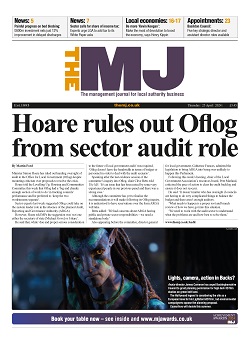The pre-election period is upon us and, as it does year after, continues to throw up issues requiring careful judgement by communicators and their colleagues responsible for democratic or corporate governance services.
Here’s a couple of examples from Essex which emerged in the first week of this year’ pre-election period.
- Is it permissible for a video featuring a cabinet member highlighting achievements in a particular area of council activity to be played to employees at a roadshow event?
- Is it permissible for a recently launched survey of parents/carers on travel habits to and from schools in a part of Essex to continue – given the fact that subsequent recommendations which could be potentially unpopular might result?
The answers – based on my interpretation of the Code of Practice on publicity, which governs this area, are:
- Yes. The element of potential contention here is whether the video represents ‘publicity’. Given that the audience is 100% made up of employees of the council, the video is essentially information on outcomes of work, and is therefore within the normal operations of the council. (It’s important to note here that if the video were to be shown externally, it would almost certainly be in breach of the code, especially if the councillor concerned had elections in their area or was standing as a candidate).
- Yes. In this case, the survey concerned began before the pre-election period and will conclude a short time into it. It does not involve reference to any politicians, and although (potentially) recommendations could be controversial locally, these will not appear until after the pre-election period has concluded. And again, the activity is not publicity (in fact, the survey is not even a consultation, given it is seeking insight on travel habits, not seeking views on options for change).
Both these examples go to show that the pre-election period is the time when we need to think harder than ever about our business, second guessing whether a piece of ‘publicity’ – I’ll come on to the significance of that term – is allowable under the guidance.
Ah yes, the guidance. This is the Local authority Publicity Code (2011), the touchstone document for what is and isn’t allowable within the pre-election period which has statutory force under the Local Government Act 1986.
There are several elements which colleagues sometimes find confusing, or unclear, within the code.
Firstly, the Act defines publicity as ‘any communication in whatever form, addressed to the public at large or a section of the public’. The code therefore applies in relation to all decisions by local authorities relating to paid advertising and leaflet campaigns, publication of free newspapers and newssheets and maintenance of websites – including the hosting of material which is created by third parties.
When Paul Rowsell of DLUHC wrote the guidance, social media had already started to take root as a key communications channel for councils – although it isn’t specifically mentioned here, it is most definitely covered in the wider definition of publicity.
The Code applies seven principles to publicity and states that publicity by local authorities should be lawful, cost effective, objective, even-handed, appropriate, have regard to equality and diversity and be issued with care during periods of heightened sensitivity.
It’s that final principle which is obviously key in any election period.
The code states that ‘…During the period between the notice of an election and the election itself, local authorities should not publish any publicity on controversial issues or report views or proposals in such a way that identifies them with any individual members or groups of members.’
All well and good, and I think pretty-well understood. Considering what is, or isn’t, controversial here is largely a matter of common sense. You can apply a simple social media test – is this likely to get people worked up or provoke a twitter storm or similar social media moments? – a useful approach which errs on the side of caution given the propensity of some channels to fan the flames.
What are the main take aways for communicators from the guidance? Here are my top three:
- Publicity will be limited during any pre-election period, but the business of the council goes on, and information and news still needs to be communicated. The question to ask is, ‘Why can’t/shouldn’t this happen?’ The code is actually pretty useful in getting to good judgments here.
- Read any proposed consultative activity and associated publicity (in particular) around or in the pre-election through the lens of a candidate. If it is or could become an election issue, it’s probably a good idea to wait.
- Reach out and work with teams and departments and offer your council’s interpretation of the guidance. There is usually someone who hasn’t factored the pre-election period into their planning – especially if your council doesn’t have elections, but you are in a two-tier area with other councils who do – or if there are Police and Crime Commissioner elections.
Finally - remember that the Code applies to the council and the use of its resources. Members who aren’t using council resources can generate their own publicity, subject to the code of conduct and the rules about election expenses.
Andy Allsopp is head of profession, communications and marketing, Essex CC, and Joint chair of LGcomms



